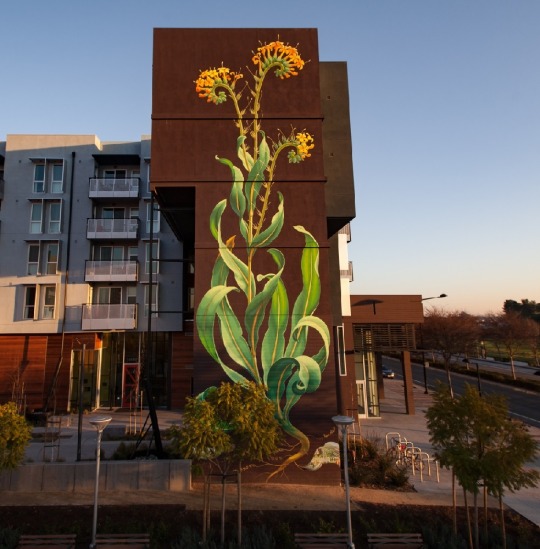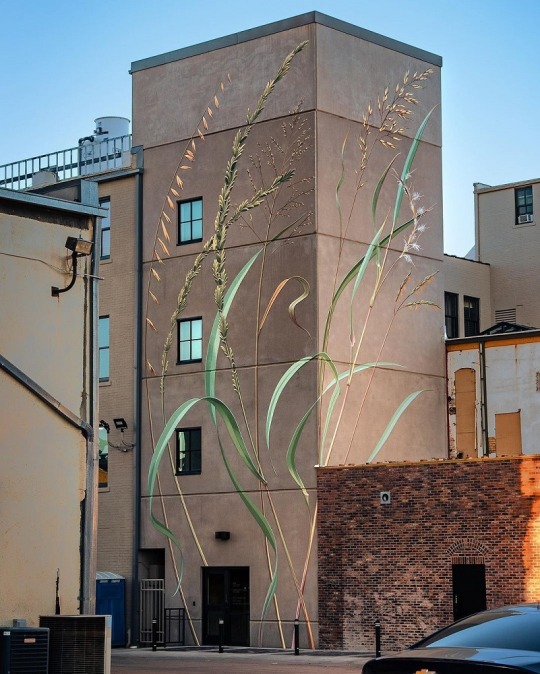#swiss culture
Explore tagged Tumblr posts
Text

Portrait of Sarah Harrop as a Muse
Artist: Angelica Kauffmann (Swiss, 1741–1807)
Date: 1780–1781
Medium: Oil on canvas
Collection: Princeton University Art Museum, Princeton, New Jersey, United States
Description
Angelica Kauffmann’s portrait of the renowned singer Sarah Harrop (Mrs. Bates), arguably the artist’s masterpiece in portraiture, is a rare representation of a self-made woman, the great Handelian performer Sarah Harrop (1755–1811), by one of the very few professional women artists of the period. Kauffmann, one of two female cofounders of Britain’s Royal Academy, shows Harrop seated in the wilderness, a lyre at her side and a rolled sheet of music in her hand. The mountain, Mount Parnassos, is the home of the Muses, and the waterfall issues from the Hippocrene spring. The lyre most likely identifies Erato, the Muse of lyric poetry, and while the instrument is based on ancient types, the sheet music grounds the portrait in the eighteenth century, for it is recognizably an aria from George Frideric Handel’s opera Rodelinda, Queen of the Lombards (1725).
The picture, first exhibited at the Royal Academy in 1781, dates from around the time of Harrop’s marriage in 1780, a marriage to which she brought a substantial personal fortune made through her talents as a performer. The music hints at a personal meaning. The aria "Dove sei, l’amato bene" is sung not by Rodelinda but by her husband, whose longing words must have been chosen specifically for their personal significance in what was almost certainly a marriage portrait. That Kauffmann the artist was also married at about this time, to a fellow artist of more pedestrian talents, Antonio Zucchi, only deepens its resonance.
#portrait#landscape#muse#lyre#music sheet#female#three quarter length#artwork#oil on canvas#fine art#oil painting#sarah harrop#handelian performer#wilderness#rolled sheet of music#mount parnassos#waterfall#hippocrene spring#symbolism#pink dress#cloak#high hairdo#coiff#swiss culture#swiss art#angelica kauggman#swiss painter#european art#18th century painting#princeton university art museum
19 notes
·
View notes
Text

Sappho Inspired by Love
Artist: Angelica Kauffman (Swiss, 1741-1807)
Date: 1775
Medium: Oil on canvas
Collection: John and the Marble Ringling Museum of Art, Sarasota, Florida
Description
Sappho is shown holding a parchment inscribed "ἔλθε μοι καὶ νῦν, χαλέπαν δὲ λῦσον ἐκ μερίμναν" ('So come again and save me from unbearable pain'), the first lines of the last verse of her Ode to Aphrodite in ancient Greek from Joseph Addison's 1735 edition of the work.
#mythology#sappho inspired by love#cupid#landscape#ode to aphrosite#lyric poetry#painting#oil on canvas#female figure#artwork#swiss culture#swiss painter#angelica kauffman#fine art#oil painting#poet#18th century painting#european art
23 notes
·
View notes
Text

Queen Christina of Sweden (1626-1689) in Rome
Artist: Possibly Michael Dahl (Swiss, 1659-1743)
Date: 1687-1688
Medium: Oil on canvas
Collection: National Trust Collection, London, United Kingdom
Description
Oil painting on canvas, Queen Christina, Queen of Sweden (1626-1689) in Rome, possibly by Michael Dahl (Stockholm 1656/9 – London 1743), 1685/87. A three-quarter-length portrait of the Queen of Sweden, after her abdication, seated to right, her head turned three-quarters to the left, gazing to left of spectator, wearing a grey and blue satin dress, trimmed with ermine, her left arm resting on a globe which is encircled by a scroll inscribed: NE MI BISOGNA NE MI BASTA [Neither do I need it; nor is it enough for me] expressing her renunciation of worldly things. In the background is a view of St Peter’s, Rome.
#portrait#female#queen christina of sweden#rome#queen of sweden#three quarter length#grey and blue satin dress#ermine#globe#st peter's rome#sitting#drapes#interior#crown#spectre#pearls#swedish history#michael dahl#swiss painter#swiss royalty#sweden#swiss culture#17th century painting#oil on canvas#artwork#painting#fine art#oil painting#european art
18 notes
·
View notes
Text



Traditional dress of Switzerland
#traditional costume#traditional clothes#traditional clothing#traditional dress#swiss#swiss alps#switzerland#swiss culture#culture#cultural#german#french#west europe
7 notes
·
View notes
Text

The Sorrow of Telemachus
Artist: Angelica Kauffman (Swiss, 1741-1807)
Date: 1783
Medium: Oil on canvas
Collection: Metropolitan Museum of Art, New York City, NY, United States
Description
This painting, by the Swiss artist Angelica Kauffmann, depicts a scene of the sea deity, Calypso, and her entourage of five other nymphs, playing host to two important guests who appeared on Calypso’s island. One guest is the youth in tan or gold garments, sitting despondently at the table. This young man is Telemachus, son of the famous Greek hero, Odysseus (or the Roman Ulysses), whose adventures were told in Homer’s epic poem, The Odyssey. Behind Telemachus, a grey-haired and long-bearded figure can be seen. All of the other characters know the old fellow by the alias, Mentor, but the person is really the goddess Athena (or the Roman Minerva) in a magical disguise. Despite these characters, Angelica Kauffmann’s painting does not take its inspiration from a scene in Homer’s ancient epics, nor does it recreate any other ancient Greek or Roman myths about Telemachus, Athena/Minerva, and Calypso. Instead, the painting re-creates a scene from a book called The Adventures of Telemachus, published in 1699 by Archbishop François de Salignac de La Mothe-Fénelon of Cambrai (his name can thankfully be shortened to François Fénelon). In this curious Odyssey spinoff, François Fénelon expanded on and added to the escapades and experiences that Telemachus underwent while he waited for his father to return home from the Trojan War, including the encounter with Calypso seen above.
#telemachus#sorrow#calypso#oddyseus#classical mythology#greek mythology#landscape#greek gods#swiss culture#swiss painter#mythological art#mythological scene#mythological characters#chair#table#male figures#female figures#foliage#angelica kauffman#european art#18th century painting#artwork#oil on canvas#fine art#oil painting#metropolitan museum of art
19 notes
·
View notes
Text
In a recent Swiss vote, Covid measures were extended, and new tax and climate laws were adopted. This decision reflects the country's commitment to combatting the pandemic and addressing environmental concerns. The move demonstrates Switzerland's proactive approach to protecting public health and mitigating climate change.
2 notes
·
View notes
Text
Discover Elegance Swiss Design Collection | Swiss Comic Art
Immerse yourself in the captivating world of Swiss Comic Art. Experience the elegance of Swiss design collection such as t-shirts, mugs, tote bags etc.
#swiss design collection#swiss art#swiss prints#swiss culture#swiss comic art#prints#t-shirt prints#mugs prints#art print styles#Wall Art Prints#switzerland
1 note
·
View note
Text




Plant of the Day
Saturday 19 October 2024
This cultivar of Beta vulgaris subsp. cicla var. flavescens (Swiss chard) had dramatic red stems. This group of cultivated beets can produce an edible crop all year round and are known for their resistance to bolting (running to flower and seed). These plants were being grown on a ‘hugelkultur’ (hill culture) which is a no-dig raised bed filled with biomass (wood, leaves, cardboard and other compost) and finished with soil. This feature holds moisture, builds fertility and maximises the surface area.
Jill Raggett
#beta#swiss chard#red stems#plants#vegetable garden#vegetables#edibles#horticulture#gardens#garden#hugelkultur#hill culture#Black Isle Brewery
143 notes
·
View notes
Text




outrage in the DACH region: traditional dinner plate is now controversial tiktok trend
#german stuff#austrian stuff#swiss stuff#DACH stuff#!#das ist so unfassbar lustig#nicht so lustig ist dass es mutmaßlich tiktok diet culture ist#nehme ich an???#also gendered food we love to see it#anyway as silly as it is#it's abendbrot you guys#all long as long as you eat enough of it#i need a tag for funny things
643 notes
·
View notes
Text

Self-Portrait
Artist: Angelica Kauffman RA (Swiss, 1741-1807)
Date: c. 1764
Medium: Oil on canvas
Collection: National Trust Collections, United Kingdom
Description
Oil painting on canvas, Self-portrait (after Kauffman) by an Unknown artist after an original of Angelica Kauffman RA (Chur 1741 – Rome 1807), circa 1764. She is seated looking to the left, wearing a red dress and holding an artist's palette board and paint brush in her right hand.
#self portrait#painting#oil on canvas#female#angelica kauffman#swiss painter#seated#three quarter length#upholstered chair#red dress#artist's palette#paint brush#drapery#swiss culture#fine art#oil painting#national trust collection#artwork#18th century painting
19 notes
·
View notes
Text

Bacchus and Ariadne
Artist: Angelica Kauffmann (Swiss, 1741–1807)
Date: 1794
Medium: Oil on canvas
Collection: National Trust Collections, United Kingdom
Description
Oil painting on canvas, Bacchus and Ariadne by Angelica Kauffman RA (Chur 1741 – Rome 1807), signed and dated: Angelica Kauffman Pinx: Romae 1794. Bacchus, the god of wine, wearing a leopard skin and carring a thyrsus is being led by Cupid, god of desire, represented as a winged boy. Cupid draws a golden drape aside to reveal Ariadne, in white, reclining at the right. She is weeping and has raised her right hand. The composition has a coastal setting with rockfaces and the blue sea beyond. Companion to 'Euphrosyne complaining to Venus of the Wound caused by Cupid’s Dart' by Angelica Kauffman (NT 608951). An earlier version of the subject, dated 1764 and among first classical pictures by Kauffman is in the Landesmuseum, Bregenz.
The picture was commissioned by Thomas Noel Hill, 2nd Lord Berwick (1770-1832). He was in Rome in 1792-93 with the mineralogist and traveller Edward Clarke (1769-1822), who related that 'Lord Berwick is employing Angelica Kauffmann in painting and I am now selecting passages from the poets for her to paint for his house at Attingham'. The subject was taken from Ovid.
#mythology#painting#bacchus#ariadne#god of wine#leopard skin#thyrsus#cupid#god of desire#winged boy#golden drape#weeping#coastal setting#fine art#mythological art#olive wreath#divan#angelica kauffmann#swiss painter#swiss culture#18th century painting#artwork#european art
14 notes
·
View notes
Text

Emperor Joseph II and Elector Karl Theodor Stroll in the Nymphenburg Palace Gardens
Artist: Johann Baptist Hoechle (Swiss, 1754-1832)
Date: 1793
Medium: Oil on canvas
Collection: Kunsthistorisches Museum Vienna, Austria
#group portrait#oil on canvas#history painting#nymphenburg#palace gardens#emperor joseph ii#elector karl theodor#johann baptist hoechle#swiss painter#holy roman emperor#habsburg monarchy#swiss culture#european art#european royalty#18th century painting#garden#trees#men#women#costume#cloudy skies
3 notes
·
View notes
Text






Mona Caron
#mona caron#street art#urban art#wall paintings#muralism#graffiti#pop culture#botanical art#woman artist#swiss artist#art detail
305 notes
·
View notes
Text
People love finding random natives online and dumping their family story on them expecting a reassuring 'of course you're native!!' Lol
Sorry, if you don't wanna reconnect why would you even mention your supposed apache or whatever ancestry. If you aren't connecting to the tribe what does it even matter. 'I find it interesting' so you're using supposed native ancestry as a fun fact to make you look more interesting? How is that different than any other 'great grandma cherokee princess' person. Especially since you apparently have time to research the history of all your ancestral cultures but you don't have time to do genealogy
And of course when I tell them 'assume the stories are fake until you've got actual proof' they block me.
#sigh. just the usual#like i watched this person see my popular cherokee video posts. they liked then#them. then immediately i guess went looking on my blog for somewhere to put their family story in the replies#ended up being my post on why dna tests arent relevant in native genealogy#and they were like 'yea i have 2 native family stories and whenever i mention them to someone they say join a tribe! like no?? im not#im not of any particular group im just an american mutt'#ok then dont claim it? why claim any ancestry if youre going to just say 'lol but not Actually'#and they did Not like hearing that#'well i find it interesting' ok? these are living people youre claiming a connection to. claiming native ancestry isnt the same as going#'oh im 2% swiss haha thats fun' youre claiming to be a part of one of many cultures who are constantly stolen from and misused#idk. shits so annoying#'its too far back and im just a mutt' ok what does that make me then? a white native with Low blood quantum? is mine too far back too? like.#its funny how many people ill hear say 'well its too far back id only be like 1/16 lol so i shouldnt bother with it'#if you wanna know whether youd Count just ask who can reconnect. you dont need to self depreciate and try to get the random person youre#talking to to reassure you#anywayyyyy idk#its funny reconnecting and finding out all these things that are just par for the course to any other native#like 'yup. those guys' and im over here fuming hahaha#ill learn to just not engage eventually but right now i still have hope i can actually help some people who are here to genuinely learn#and at least im getting these people instead of them going to connected folks who have to deal with this shit way more than me#like ugam said at one point. its my job to play interference lol and i dont mind it#i just wish id get some people that will actually be reasonable instead of arguing and blocking me
21 notes
·
View notes
Text
0 notes
Text

German Swiss duo, Switzerland, by Kanton Appenzel
#german swiss#swiss#switzerland#europe#western europe#folk clothing#traditional clothing#traditional fashion#cultural clothing
130 notes
·
View notes